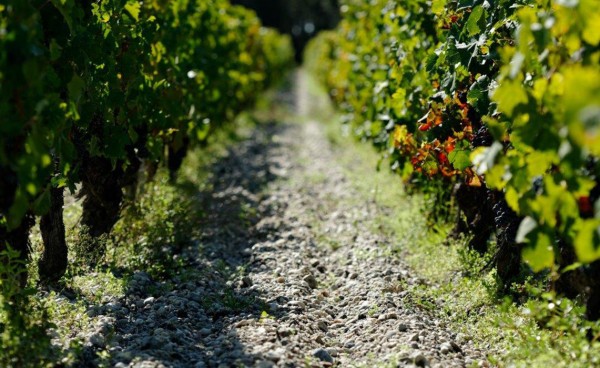Chemical weed killers and fertilisers are banned.
The soil is weeded mechanically and ploughed. Only organic compost is used and the soil life is intense, allowing the vines to find all the mineral complexity necessary for a great vin de terroir.
Organic methods (introducing predator mites and pheromones) are used to fight against insects and other pests.
Preventive measures (without the use of chemicals) keep vine vigour in check and the controlled level of nitrogen inhibits the spread of grey rot. Leaf thinning is spread out three times between July and early September. The position of the grape bunches on the vine provides for better ventilation and improved sun exposure, and therefore better ripening.
We do everything we can to produce healthy, concentrated fruit reflecting its terroir, and to pick at peak ripeness.
Work in the vineyard begins very early, as soon as the vine flowers.
This is, of course a crucial phase in order retain balance, structure, and flavour in the future wine.
The grapes are picked entirely by hand in several passes to bring in only the ripest, healthiest fruit. This is taken to the cellar in small crates to avoid bruising prior to crushing. Grapes from each plot are fermented separately to reflect their origin and make it possible to fine tune the final blend.
White wine: Sauvignon Blanc and Sémillon are picked by hand in three passes at just right degree of ripeness in September.
Red wine: green harvesting operations make sure that only beautiful, ripe fruit is harvested. Hand picked and sorted a first time in the vineyard, the grapes are sorted twice more in the cellar.
Rigour and selection continue in the cellar:
White wine grapes transported in small crates are put directly into a pneumatic winepress, where they are gently pressed for three hours. The must is cold settled in small stainless steel vats and pumped into barrels, where it ferments for 2 weeks. The wine is then aged on its lees with bâtonnage (stirring with a stick) for 10 months, without malolactic fermentation. Tasting barrel by barrel determines the final blend. Any imperfect wine is eliminated.
Red wine grapes are handled differently:
The small crates are first emptied onto a sorting table and gone over one by one to remove any defective grapes that were not excluded in the vineyard. A conveyor belt then takes the grapes that have been retained to a destemmer. They go from there to a second sorting table, where two dozen sets of hands remove any remaining bits of stems or substandard grapes. The fruit is then crushed and transferred by gravity flow into small, 60-80 hectolitre temperature-controlled vats.
These make it possible to ferment grapes from each plot separately. There is never any abrupt change in temperature. Pumping over and pigeage (punching down the cap) are done manually, not by machine. Seeing as each vintage is different, the role of the winemaker, with his unique understanding of each vat, is vital in making the right decisions.
Retaining fruitiness to ensure fresh, pure, elegant wine is an absolute priority. The wine is aged on its lees in barrel for the first 4-5 months, and barrel-ageing continues for another ten months after racking and blending.
The elegance and ripeness of the tannin obviate fining.
Light filtration is often done before bottling at the château.



